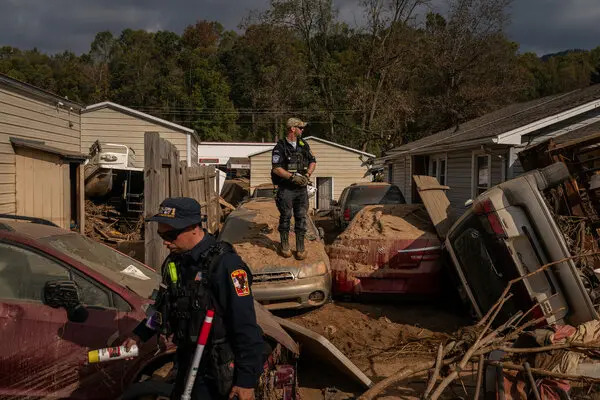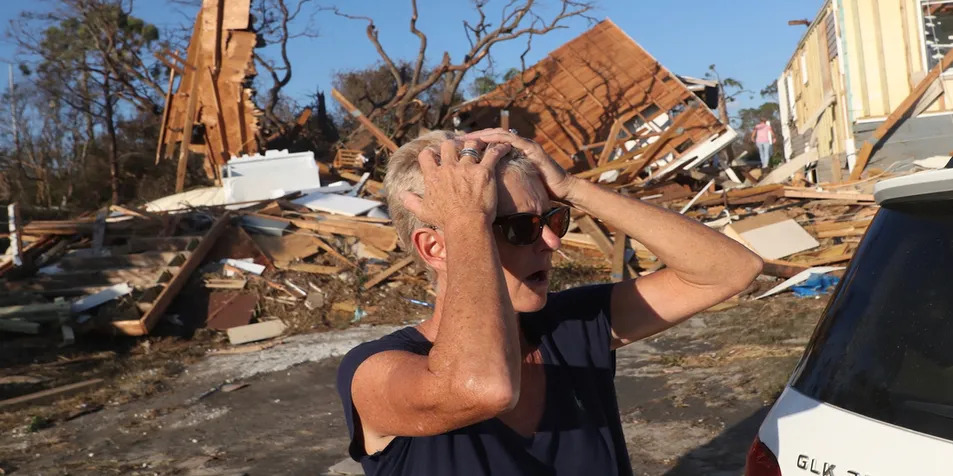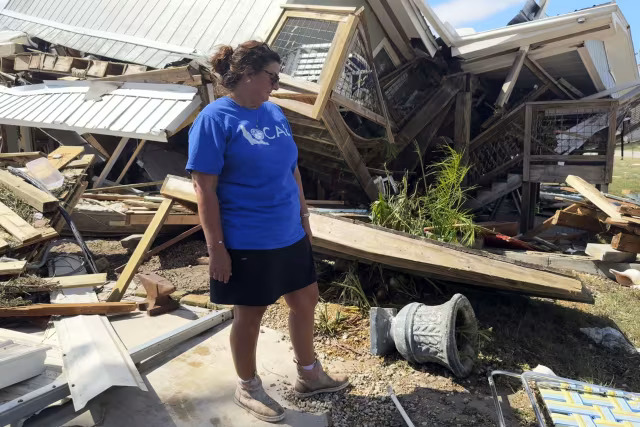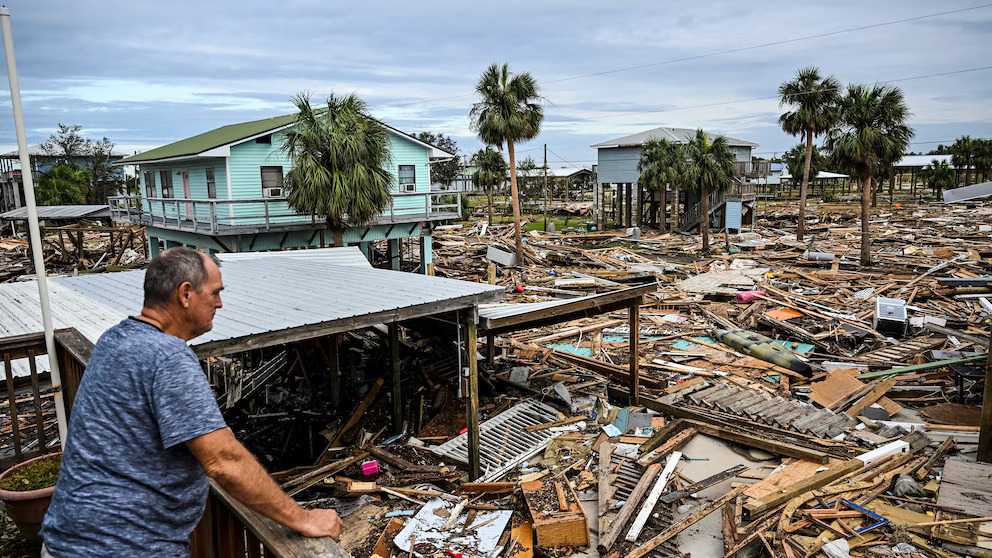The Horrific Human Toll of Hurricane Milton

The escalating threat of climate change has brought forth some of the most devastating weather events in recent years, and Hurricane Milton, a Category 5 storm, is no exception.
As meteorologists across the globe track its movement, many are left grappling with the sheer intensity of this storm. One such weatherman, John Morales, a seasoned meteorologist from NBC affiliate WTVJ in Florida, found himself overwhelmed with emotion while delivering a live update on the storm.

The Emotional Weight of Reporting on Natural Disasters
For decades, meteorologists have been at the forefront of communicating vital information to the public during severe weather events. Their role is critical in ensuring that people understand the gravity of the situation, take necessary precautions, and, ultimately, protect themselves and their families. For these professionals, especially those in regions like Florida that are frequently hit by hurricanes, the emotional burden can be overwhelming.
John Morales, a highly respected meteorologist, found himself struggling to maintain composure during a live broadcast about Hurricane Milton. As he relayed critical information about the storm’s trajectory and its potential destruction, the weight of the moment became too much. His voice faltered, and tears welled up in his eyes as he apologized to viewers, saying, “I apologize — this is just horrific.”
Morales’ emotional reaction highlighted a seldom-seen side of weather reporting—the emotional toll that comes with constantly reporting on disasters, knowing that lives are at stake. These events aren’t just news bulletins for meteorologists; they are real-life tragedies unfolding before their eyes.
Hurricane Milton: A Storm of Unprecedented Strength
Hurricane Milton, which developed in the Gulf of Mexico, rapidly intensified into a Category 5 hurricane, a classification reserved for the most destructive and deadly storms. Meteorologists noted that Milton’s sheer size and power were unlike anything they’d seen in years. The storm’s eye was expansive, stretching hundreds of miles, and its winds reached speeds of over 160 mph. As Milton barreled toward the Yucatan Peninsula, it left a trail of destruction in its wake.
Florida, a state notoriously vulnerable to hurricanes, braced for impact as Milton continued its path. The storm was expected to make landfall in key cities like Tampa and Miami, prompting mass evacuations and emergency preparedness measures. The images of long lines of cars leaving coastal cities, empty grocery store shelves, and residents boarding up their homes became common scenes in the days leading up to the storm’s arrival.
For Morales, this storm wasn’t just another news cycle—it was deeply personal. He had lived through hurricanes before, reporting on storms that had devastated Florida communities, but there was something different about Milton. Perhaps it was the growing sense of helplessness, knowing that climate change had created a storm of such ferocity, or maybe it was the realization that, despite all the warnings, some people would not make it through unscathed.

The Role of Climate Change in Supercharging Storms
One of the most pressing concerns raised by Morales during his broadcast was the role that climate change plays in creating these “superstorms.” In recent years, scientists have warned that rising global temperatures are contributing to more frequent and intense hurricanes. Warmer ocean temperatures provide the fuel that hurricanes need to grow and intensify, and as the planet continues to heat up, the storms that form are becoming more powerful and more destructive.
Milton is a prime example of this. The Gulf of Mexico, where the storm developed, has been experiencing record-breaking sea surface temperatures. These warm waters helped Hurricane Milton intensify rapidly, going from a tropical storm to a Category 5 hurricane in a matter of days.
In his emotional broadcast, Morales stressed the urgency of addressing climate change, calling it a key factor in the growing severity of hurricanes. He noted that the world is entering a dangerous new era, where storms like Milton will become more common, and the destruction they bring will only increase.
“Rising ocean temperatures, global warming, climate change—it’s all connected,” Morales said. “And now we’re seeing the devastating effects. This is a preview of what’s to come if we don’t take action.”
>> The Horrific Human Toll of Hurricane Milton
The Human Cost of Natural Disasters
While the science behind hurricanes is complex, the human impact is much more straightforward—loss of life, destruction of homes, and the displacement of entire communities. As Hurricane Milton made its way toward Florida, the sense of impending doom was palpable. The state, which has experienced its fair share of hurricanes, was no stranger to evacuations, but the intensity of this storm added an extra layer of fear.
Evacuations were ordered in cities like Tampa and Miami, with emergency officials urging residents to leave immediately. For many, this meant packing up their entire lives, not knowing if they would have a home to return to. Shelters filled up quickly, and local governments worked around the clock to ensure that people had a safe place to go.
But evacuations aren’t always possible for everyone. Low-income families, the elderly, and those without access to transportation often find themselves trapped in the path of these storms. For these individuals, the options are limited, and many are forced to ride out the storm in precarious conditions.
This is the reality that weighed heavily on Morales as he delivered his forecast. He knew that, despite all the warnings, there would be people who couldn’t or wouldn’t evacuate. He knew that when the storm made landfall, lives would be lost, and communities would be forever changed.

The Aftermath: A Long Road to Recovery
As Hurricane Milton approached Florida, it left a trail of destruction in Mexico’s Yucatan Peninsula. Coastal communities were battered by the storm’s powerful winds and storm surge, with reports of widespread flooding and structural damage. The full extent of the damage in Mexico was still being assessed, but early reports indicated that many areas had been completely devastated.
In Florida, the preparations continued as residents braced for the storm’s arrival. Emergency officials warned that Milton would bring life-threatening storm surge, flash flooding, and hurricane-force winds to a large portion of the state. Power outages were expected to be widespread, and it could be weeks or even months before the hardest-hit areas fully recovered.
The recovery process after a hurricane is long and arduous. Communities must rebuild, often with limited resources, and the psychological toll on residents can be immense. For those who have lost loved ones, homes, or businesses, the road to recovery is not just physical but emotional as well.
A Call for Action
As Hurricane Milton looms over Florida, it serves as a stark reminder of the increasing frequency and severity of natural disasters fueled by climate change. Meteorologists like John Morales play a crucial role in keeping the public informed and safe, but they are also human beings who are deeply affected by the stories they tell.
Morales’ emotional breakdown on live television was a powerful moment, one that underscored the human side of natural disasters. It reminded viewers that behind every forecast, every warning, and every storm track, there are real lives at stake. As we face an uncertain future with more intense storms like Hurricane Milton, the call for action on climate change has never been more urgent.
The question now is, will the world listen? The time to act is now, before more lives are lost, and more communities are destroyed by the power of nature.



